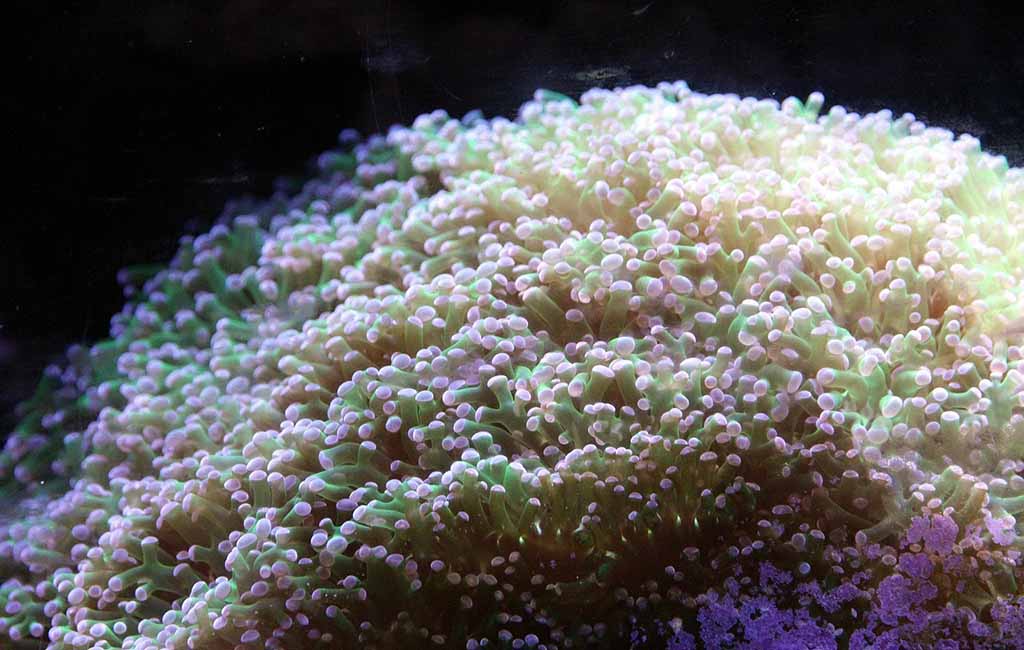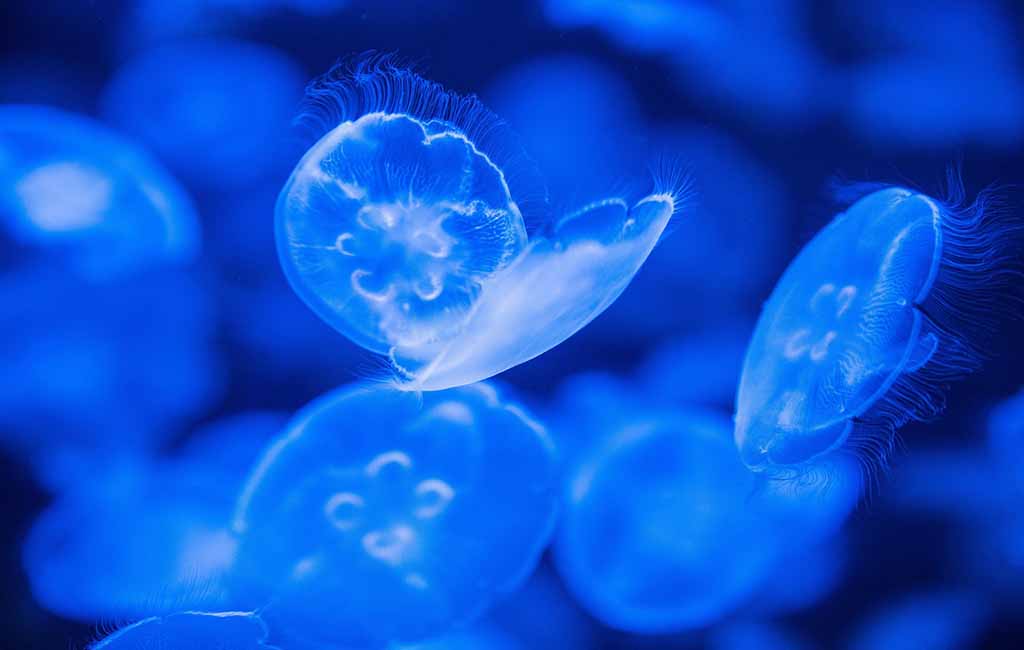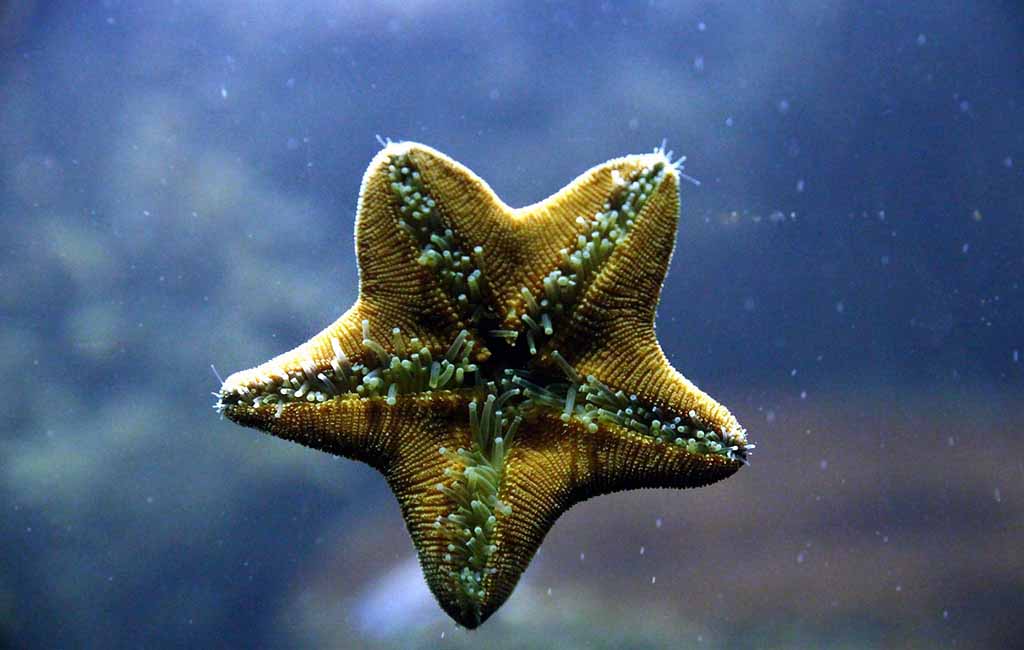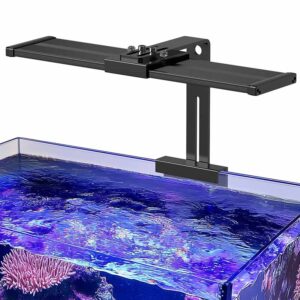Pet aquariums provide a region of the ocean into homes, giving a glimpse of marine animals and organisms. So yes, fish are the stars, but you cannot forget that invertebrates are incredibly important for a healthy and diverse ecosystem. These interesting animals, which vary from shrimp, snails, and corals to anemones serve purposes of increasing the diversity of an aquarium. This makes it important for anyone who plans to have them in their aquarium to understand their classification and the specific habitat requirements.
Content Table
What Are Invertebrates?
Invertebrates are animals without external spinal columns; they are seven orders more populated than vertebrates and represent ninety-seven percent of all the known animal population. Aquatic creatures exist in different sizes and forms as well as in such places as the deep sea and the shallower waters of the pond. Unlike vertebrates they have to use some form of integumentary support system such as exoskeletons, hydrostatic skeleton etc.
Among these characteristics are the following:
- Lack of a Vertebral Column: Instead of bones, they rely on other support systems.
- Diverse Body Structures: Ranging from soft-bodied jellyfish to hard-shelled mollusks.
- Rapid Reproduction: Many species reproduce quickly, ensuring population stability.
- Vital Ecosystem Roles: They act as decomposers, predators, and prey, maintaining ecological balance.

what are invertebrates
Invertebrate Animals in the Ocean
Marine invertebrates alone make up the majority of the marine species; there are so many of them living in the ocean. It was estimated that there are indeed more than 1.2 million invertebrate species living in the marine environment, including several families and phyla. These creatures play significant uses in the food chain, coral formation, as nutrient cycling. Some of the most featured marine invertebrates are as follows.
Cnidarians (Jellyfish, Corals, and Sea Anemones)
- Many of them possess streaming tentacles and radial body symmetry and are classified under the jellyfish, the corals, and the sea anemones.
- Jellyfish swim peacefully in the deep sea and grasp their prey with the help of small capsules known as nematocysts.
- Coral reefs are large rock like structures assembled by coral animals which offer homes to almost all types of sea creatures.
- These organisms lock onto surfaces of the sea and develop mutualistic associations with fish like the clown fish by feeding on leftovers from sea anemone’smeals.
Mollusks (Octopuses, Squids, Clams, and Snails)
- Several of them are soft-bodied, and some are shelled animals within this group or phylum.
- It is also important to familiarize oneself with other intelligent and camouflaging animals, such as octopuses and squids.
- Clams and oysters help the ecosystem by filtering small particles, including debris and pollutant particles, from water.
- It is a fact that marine snails and cone snails are among the animals that use some sort of sting against their prey.
Crustaceans (Crabs, Shrimp, Lobsters, and Copepods)
- The crustaceans remain one of the largest groups of the arthropod subclass with such features as an exoskeleton and jointed limbs.
- Both crabs and lobsters are considered omnivores; therefore, they aid in the circulatory system of the ocean through their consumption of leftovers.
- Cleaner shrimp work with fish, especially sharing the so-called cleaner shrimp, During this process, the shrimp feed on parasites of fish.
- Despite their small size, they are a part of the copepods that one can encounter in the seawater columns, and that is their role as the primary source of food to the larger animals.
Echinoderms (Sea Stars, Sea Urchins, and Sea Cucumbers)
- Echinoderms have an endoskeleton with a water vascular system and radial symmetry that is fivefold, as well as distinctive tube feet.
- Sea stars are well known for their peculiar feature of regeneration of amputated appendages and for their portrayal of apex predators in certain biogeographical regions.
- Sea urchins feed on algae, thus controlling their overgrowth on coral reefs.
- Sea cucumbers consume a considerable volume of sand, and thus, they recycle nutrients in the sea environment.
Sponges (Poriferans That Filter-Feed and Maintain Water Quality)
- Spontaneous animals are some of the simplest forms of animals, which are, in addition to being non-organismal animals, filter feeders.
- Theyfilter feed and circulated water while using their porous bodies to capture and sieving out plankton and other wastes in water bodies.
- Some forms of sponges are located deep in the ocean, and are known to exist for several thousand years, so they are considered to be amongst the longest living creatures on the planet.

invertebrates
Aquarium Invertebrates Profile
Aquarium invertebrates are preferred and considered by aquarists since these animals are beautiful with attractive colors and have active movements and they play important roles in cleaning the aquariums. It can be categorized depending on its water type:
Freshwater Invertebrates:
- Shrimp: Cherry shrimp, Amano shrimp, and Ghost shrimp help keep algae levels in check.
- Snails: Nerite snails, Mystery snails, and Malaysian Trumpet snails aid in cleaning waste and debris.
- Crayfish: Dwarf crayfish add personality to freshwater tanks but require careful tankmate selection.
Saltwater Invertebrates:
- Corals and Anemones: Soft corals, stony corals, and sea anemones enhance reef tank aesthetics.
- Saltwater Shrimp: Cleaner shrimp, Fire shrimp, and Pistol shrimp provide natural tank maintenance.
- Crabs: Hermit crabs and Emerald crabs contribute to algae control.
Brackish Water Invertebrates:
- Fiddler Crabs are semi-aquatic creatures needing both land and water access.
- Bumblebee Goby Shrimp: Often found in estuarine environments.
- Nerite Snails: Adapt well to varying salinity levels.
Classification of Aquarium Invertebrates
Aquarium invertebrates can be classified according to the phylum and these are supported by the distinct biological properties and body structure of the particular kind of animal as well as their life patterns. It helps the aquarists be aware of the level of care and duties of certain fish species in both freshwater and marine aquarium.
Arthropoda (Crustaceans: Shrimp, Crabs, and Crayfish)
- Characteristics
- Crustaceans have segmented bodies, jointed limbs, and exoskeletons made of chitin, which they shed periodically in a process called molting.
- Most are omnivorous scavengers, feeding on organic debris, algae, or small organisms.
- Aquarium Species
- Freshwater: Cherry shrimp, Amano shrimp, Ghost shrimp, Red Claw Crayfish.
- Saltwater: Cleaner shrimp, Peppermint shrimp, Hermit crabs.
- Brackish: Fiddler crabs, Mud crabs.
- Ecological Role
- Crustaceans help maintain water quality by consuming detritus and excess food.
- Cleaner shrimp remove parasites from fish, forming mutualistic relationships.
Mollusca (Mollusks: Snails, Clams, and Octopuses)
- Characteristics
- Mollusks are soft-bodied animals, with many having hard calcium carbonate shells for protection.
- They exhibit diverse forms of locomotion, from gliding on a muscular foot (snails) to jet propulsion (squids and octopuses).
- Aquarium Species
- Freshwater: Mystery snails, Nerite snails, Apple snails.
- Saltwater: Nassarius snails, Turbo snails, Giant clams.
- Brackish: Cerith snails, Olive Nerite snails.
- Ecological Role
- Snails act as natural algae controllers by grazing on tank surfaces.
- Clams are filter feeders, removing excess nutrients from the water.
Cnidaria (Corals, Anemones, and Jellyfish)
- Characteristics
- Cnidarians possess stinging cells (nematocysts)that help them capture prey and defend against predators.
- Many corals form symbiotic relationships with algae called zooxanthellae, which provide them with nutrients through photosynthesis.
- Aquarium Species
- Saltwater Corals: Soft corals (Zoanthids, Mushroom corals), Stony corals (Acropora, Montipora).
- Sea Anemones: Bubble Tip Anemones, Carpet Anemones.
- Jellyfish: Moon jellyfish (specialized tanks required).
- Ecological Role
- Corals provide shelter and breeding grounds for marine life.
Sea anemones protect certain fish species, like clownfish, in exchange for food scraps.
- Corals provide shelter and breeding grounds for marine life.
Echinodermata (Sea Stars, Sea Urchins, and Brittle Stars)
- Characteristics
- Echinoderms are radially symmetrical, meaning their body parts are arranged around a central axis.
- They move using a water vascular system that powers their tube feet.
- Many species possess regenerative abilities, allowing them to regrow lost limbs.
- Aquarium Species
- Sea Stars: Chocolate Chip Sea Star, Sand Sifting Star.
- Sea Urchins: Pincushion Urchin, Tuxedo Urchin.
- Brittle Stars: Serpent Star, Fancy Brittle Star.
- Ecological Role
- Sea urchins control algae growth, preventing overgrowth in reef tanks.
- Sea stars act as scavengers, consuming detritus and decaying matter.
Porifera (Sponges: Simple Filter Feeders)
- Characteristics
- Sponges are primitive multicellular organisms that lack true tissues and organs.
- They rely on constant water flow through their porous bodies to filter microscopic particles from the water.
- Aquarium Species
- Saltwater Sponges: Yellow Ball Sponge, Red Tree Sponge.
- Freshwater Sponges: These are Rare but found in certain natural environments.
- Ecological Role
- Sponges help purify water by removing excess nutrients and detritus.
- Some serve as habitats for small marine creatures, including tiny crustaceans.

aquarium invertebrates
What Invertebrates Can Be Kept in Aquariums?
The types of animals found in the aquarium should be well-chosen in terms of water quality and conditions, as well as compatibility and nature of the species. Not only do they bring aesthetic value to any water areas, but they also have functions that are crucial for the area. For instance, waste control, algae control, and preventing the formation of one type of species. The following invertebrates are among the best suited to home aquariums:
Freshwater Aquarium Invertebrates
- Cherry Shrimp: Hardy and vibrant, they are excellent for planted tanks where they graze on algae and biofilm.
- Mystery Snails: Efficient cleaners that consume detritus, leftover food, and algae. They come in various colors, adding visual appeal.
- Dwarf Crayfish: Peaceful compared to larger crayfish, making them suitable for community tanks with small fish.
Saltwater Aquarium Invertebrates
- Cleaner Shrimp: These are Essential for reef tanks, as they remove parasites and dead skin from fish.
- Hermit Crabs: Great scavengers that eat leftover food and help prevent waste buildup. They require empty shells to molt and grow.
- Corals: While delicate, they enhance reef aesthetics and provide shelter for fish and other marine life. Soft and hard coral species have varying light and flow requirements.
Brackish Aquarium Invertebrates
- Fiddler crabs need both land and water access, making them ideal for paludariums.
- Nerite Snails: Excellent at controlling algae in fluctuating salinity environments. They don’t reproduce in freshwater, preventing overpopulation.
- Bumblebee Shrimp: Small, eye-catching shrimp that thrive in brackish tanks with stable water conditions.
To Be Continued…
One of the most interesting fixtures to consider putting into an aquatic terrarium is an aquarium invertebrate that looks good and offers certain beneficial attributes. Knowing the classification also helps to better take care of their needs concerning their habitat to support the health of the tank. In the next part of this series, we will look at some of the care necessary for aquarium invertebrates, feeding habits, and some of the common issues one is likely to encounter. Tune in for more information about these amazing animals!


Leave a comment